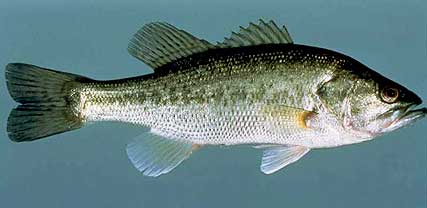Contrast of tuna and largemouth bass
 |  |
| Dept of Biology, Lewis and Clark College | Dr Kenneth Clifton | |
Biology 141 Lecture Outline |
Environmental constraints on life: physiological ecology
Physiological ecology examines how organisms perform within the constraints of their environment
What variables might be important? Think "limiting variables" based on the organism's biology (e.g., animal vs. plant, marine vs. terrestrial, etc).
How does this influence spatial or temporal patterns of distribution and abundance?
Organisms may not be physiologically capable of surviving in a particular environment.
Differences in performance (e.g., reproductive rate) based on environmental conditions may determine spatial or temporal patterns of abundance.
Introducing the niche
Defining the fundamental niche
Defining the realized niche.
Thinking about what this means for distribution and abundance
Alternative solutions to the problem of budgeting energy
Contrast of tuna and largemouth bass
Ectotherms, endotherms, and behavioral thermoregulation
Thinking about how enzyme function varies with temperature
Ecological topics relevant to the study of animal physiology and environmental conditions (ecological physyiology)
Genetic engineering: pushing the degree to which organisms are constrained by the environment
Ecotoxicology: how toxins influence organisms under "natural" conditions
Invasive/Exotic species (understanding tolerances)
Now turn to sources of energy and nutrients within the environement
What about Primary Producers?
Reviewing the efficiency (inefficiency?) of energy transfer from one trophic level to another.
Primary production sets an upper limit to the number of links in a food chain. How can we measure an ecosystem's primary production?
gross primary productivity, GPP.net primary productivity, NPP: easier to measure and more relevant.
Decomposition: misunderstood and under-appreciated!
A life-giving process: returns nutrients (i.e. molecules like N, P, K, S) to the soil to be used again.Unlike energy, which eventually dissipates to less-useful forms like heat, the same molecules are used over and over and over...
Example: phosphorus (P). Start with an ion in the soil. How does it get out? Two ways:
uptake by plant roots and incorporation into plant tissue, or...it is washed awayIf taken up, then, eaten by a primary consumer, or... the plant dies... or it is burnedIt is then
excreted as waste, or
the primary consumer dies, is decomposed, P returns to soil, or
primary consumer is eaten by a secondary consumer, and so on...
If the plant or plant part dies and is decomposed, ion returns to soil, or
If the plant is burned, ion returns to soil.
If washed into a water body. Then:
either taken up by an aquatic plant (subsequently as above)or carried into ocean
where it is either taken up by a marine plant, etc. orit sinks to the bottom, incorporated into sediment, released through erosion after very long time
Phosphorus has no volatile form, so it spends no time in the atmosphere. This not so for all "nutrients". Carbon, for example, is different. (see a discussion of generalized biogeochemical cyles)
Carbon is present in air as carbon dioxide (0.03%).Plants take it out of the air for photosynthesis, return it through respiration.
Consumers and decomposers also return carbon to the air through respiration.
It can diffuse from the air into water bodies, and back again.
It can get tied up in sediments (gas, oil, coal), released through combustion many years later.
Nitrogen (N2) is the most common element of our atmosphere (~78%) but it must be "fixed" into Ammonia to be used by plants as a nutrient.
Nitrogen fixation is generally done by prokaryotic bacteria.
The availability of various elements may play an important role in where organisms occur and how they perform.
This leads to the idea of "limiting resources"
Now let's think more about the scale at which these and other ecological processes occur.
Spatial variation (scales in "space")
Temporal variation (scales in "time")
Some basic examples:
Spatial scale in the rocky intertidal
Temporal scale in El Nino Southern Oscillation events
The importance of stepping beyond "human" scales in detecting pattern
Evolutionary processes over time
The distribution of marine organisms in space
A combination of the two
Plate Tectonics
Thinking about scale is critical for sampling regimes.... especially given that ecologists ultimately rely on "snapshots" when analyzing pattern.
Remember the importance of collecting "repeated" samples: Replication (that is "independent" of other samples) and randomization
How do you choose the right scale to work at?
Think about the nature of your dependent and independent variables
How do these ideas relate to studies of English Ivy?